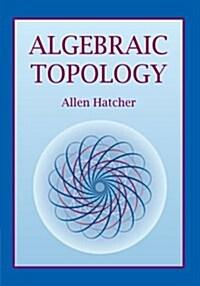책 이미지

책 정보
· 분류 : 외국도서 > 기술공학 > 기술공학 > 제조
· ISBN : 9781394202263
· 쪽수 : 448쪽
· 출판일 : 2023-10-17
목차
Preface xiii
1 Introduction 1
1.1 What is additive manufacturing? 2
1.2 Terminology 4
1.3 Uses 6
1.4 Scientific synergy with welding 12
1.5 The role of computers 14
1.6 The important scientific issues 18
1.7 Technological and commercial issues 21
1.8 Content of this book 22
2 Feedstocks and Processes for Additive Manufacturing of Metals and Alloys 27
2.1 Introduction 28
2.2 Additive manufacturing processes 28
2.3 Powder feedstock 34
2.4 Wire and sheet feedstocks 42
2.5 Summary 44
3 Feedstocks and Processes for Additive Manufacturing of Polymeric Parts 49
3.1 Introduction 50
3.2 Additive manufacturing processes and equipment 50
3.3 Feedstocks 60
3.4 Additive manufacturing of polymer composites 64
3.5 Applications of additively manufactured polymer and composite parts 69
3.6 Summary 71
4 Feedstocks and Processes for Additive Manufacturing of Ceramic Parts 75
4.1 Introduction 75
4.2 Feedstocks 76
4.3 Additive manufacturing processes 78
4.4 Defects and properties 81
4.5 Applications 84
4.6 Outlook 86
4.7 Summary 86
5 Design for Additive Manufacturing 91
5.1 Introduction 92
5.2 Uniqueness considerations in the design for additive manufacturing 94
5.3 Constraints in the design for additive manufacturing 96
5.4 Materials selection in the design for additive manufacturing 98
5.5 Topology optimization 105
5.6 Process selection in the design for additive manufacturing 108
5.7 Sustainability consideration in the design for additive manufacturing 118
5.8 Summary 120
6 Sensing, Control, and Qualifications 125
6.1 Introduction 126
6.2 Sensors 126
6.3 Applications 133
6.4 Processing and storage of the sensing data 140
6.5 Control models 140
6.6 Sensing and control in part qualification 142
6.7 Summary 143
7 Heat Transfer in Additive Manufacturing 147
7.1 Introduction 148
7.2 Heat sources 150
7.3 Heat absorption by the feedstock 154
7.4 Heat conduction through the deposit and substrate 157
7.5 Convective heat transfer within the molten pool 165
7.6 Convective and radiative heat losses from the part 178
7.7 Temperature and velocity fields, thermal cycles, and heating and cooling rates 179
7.8 Emerging numerical simulations of heat transfer in additive manufacturing 184
7.9 Summary 185
8 Microstructure and Its Control 191
8.1 Introduction 192
8.2 Grain structure 193
8.3 Microstructures of common alloys 215
8.4 Process dependence of microstructure 217
8.5 Control of microstructure 219
8.6 Single crystals 222
8.7 Microstructure characterization techniques 223
8.8 Summary 224
9 Properties 229
9.1 Introduction 230
9.2 Mechanical properties 230
9.3 Post-processing to improve mechanical properties 250
9.4 Corrosion resistance 251
9.5 Summary 257
10 Common Defects in Additively Manufactured Parts 263
10.1 Introduction 264
10.2 Cracking 265
10.3 Voids and pores 270
10.4 Surface defects 280
10.5 Loss of alloying elements 286
10.6 Characterization methods 291
10.7 Defect mitigation 294
10.8 Summary 297
11 Residual Stresses and Distortion 303
11.1 Introduction 304
11.2 Origin of residual stresses and distortion 305
11.3 Measurement techniques 311
11.4 Analytical calculations of strain 320
11.5 Numerical simulation of residual stresses and distortion 323
11.6 Residual stresses and distortion in different AM processes 324
11.7 Effects of process parameters and printing strategies 326
11.8 Effects of residual stresses and distortion 328
11.9 Controlling residual stresses and distortion 332
11.10 Summary 333
12 Mechanistic Models, Machine Learning, and Digital Twins in Additive Manufacturing 339
12.1 Introduction 340
12.2 Mechanistic models 340
12.3 Machine learning 353
12.4 Digital twin in additive manufacturing 373
12.5 Summary 374
13 Safety, Sustainability, and Economic Issues in Additive Manufacturing 385
13.1 Introduction 386
13.2 Safety 386
13.3 Sustainability 389
13.4 Economic issues 392
13.5 Summary 396
14 Current Status, Trends, and Prospects 401
14.1 Introduction 402
14.2 Current status 402
14.3 Case studies and ongoing efforts 406
14.4 Trends 412
14.5 Outlook 414
14.6 Summary 415
References 417
Index 421

























